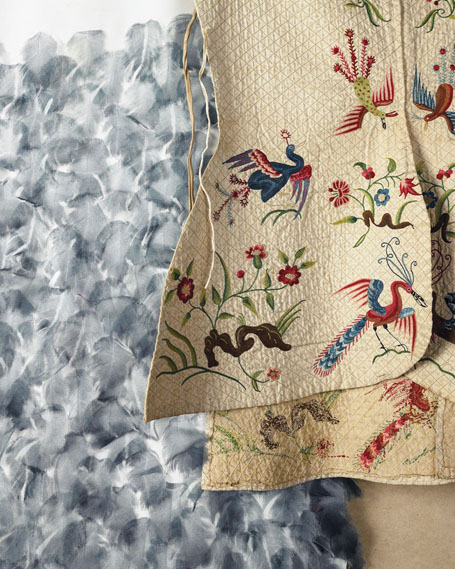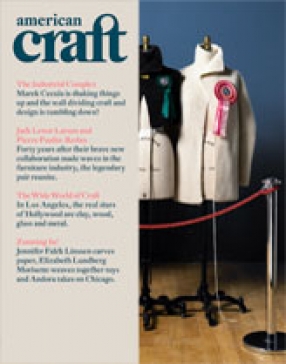PHOTOGRAPHY BY Anita Calero
The popular perception of craft is that it stands in direct opposition to industry. This is not news. The fraught relationship between craft and industry was born in the 1800s, when John Ruskin and William Morris first expressed concerns about the burgeoning industrial world. Too often the craft field finds itself circulating the same combative banter some 150 years later. While it might have made sense in the turbulent decades following the introduction of the steam engine, this mind-set falls flat in 2008, when technological advances have opened countless doors to modern makers.

Today, the public’s yearning to understand what they are consuming can be seen in the ready embrace of the slow food movement, though this desire is quickly spreading to all facets of life. Industrial behemoths, following the ever-elusive consumer, have started to take note that the knowledge base inherent in craft is a valuable asset, and that innovation—a key driver for industry—might actually lie in the making. Craft principles are now popping up across the board—from furniture manufacturers showcasing their “handmade” pieces to coffee companies trumpeting their “handcrafted” components.
Of course, there are still hurdles to clear before craft and industry see eye to eye. But ever the optimist, I can’t help seeing their similarities. I can’t help imagining how one might push the other toward a bright future where craft’s knowledge of making infuses industry with a newfound environmental understanding, and industry’s tools and methodologies open up even more doors for makers across the globe. And that both, working together with mutual respect, might enable us as a society to build a truly democratic civilization that is not only wealthy, but also healthy and wise.




